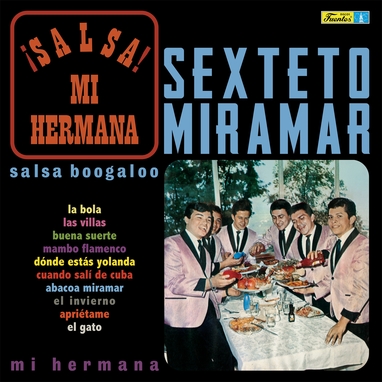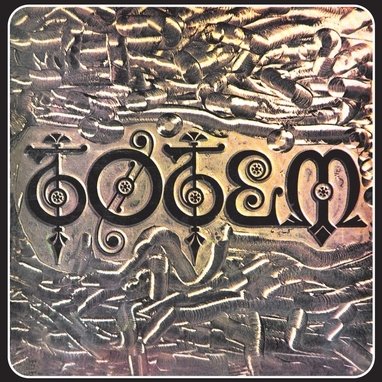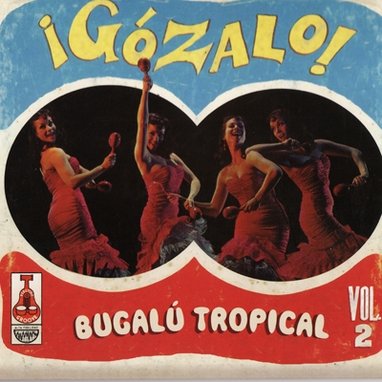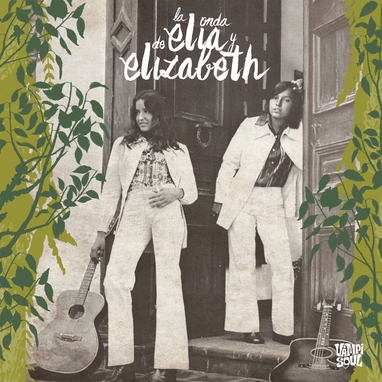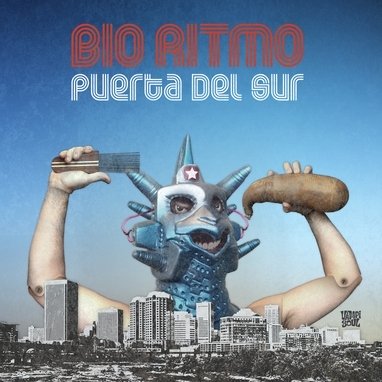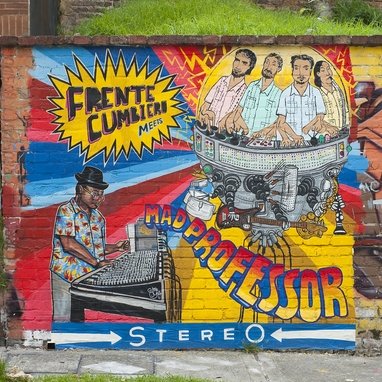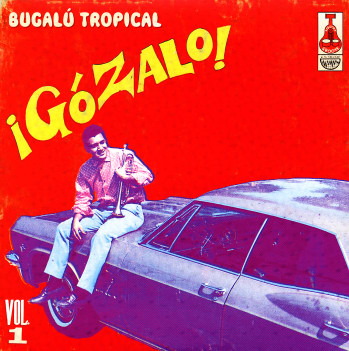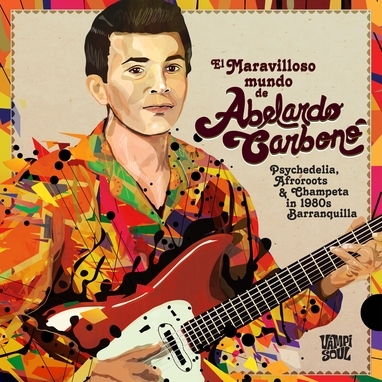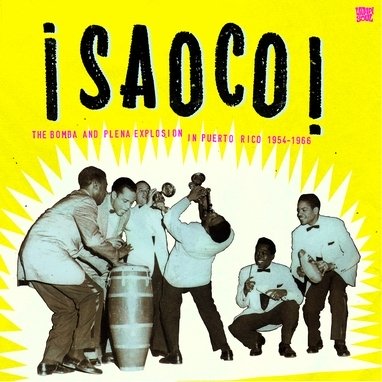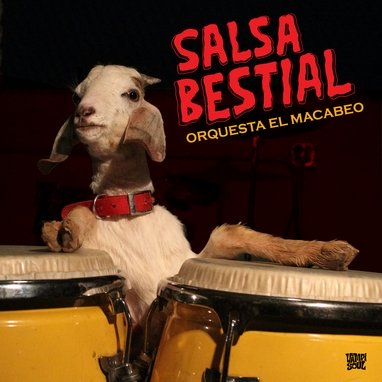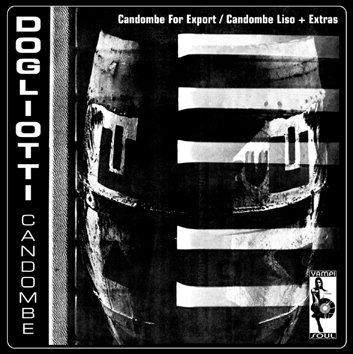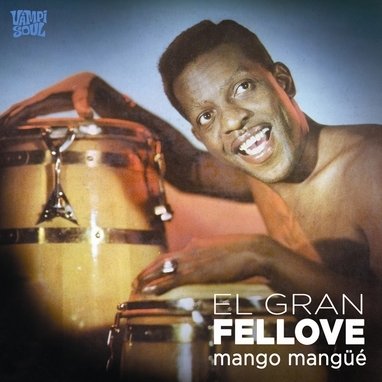Sexteto Miramar
¡Salsa! Mi hermana
16,00€
Vampisoul
Sexteto Miramar
¡Salsa! Mi hermana
Reissue of Sexteto Miramar’s groundbreaking ¡Salsa! Mi hermana LP (1968), the first recording to come out of Discos Fuentes in the salsa genre. Featuring several originals as well as cover versions of New York Latin and Cuban songs, the album’s wonderful mix of guajira, mambo, charanga, bolero, guaguancó, guaracha, boogaloo and salsa soon became hugely popular and helped update Colombian music tastes. Presented in facsimile artwork and pressed on 180g vinyl. Part of Vampisoul’s reissue series of classic Fuentes LPs.
By the time Sexteto Miramar’s groundbreaking ¡Salsa! Mi hermana LP was released in 1968 they had been performing for over a decade and had gone through changes in both personnel and instrumentation. Formed in Medellín as a children’s murguita (little holiday party band) that used to annoy the neighbors, they quickly grew into a hot teen combo specializing in Cuban and Colombian music with accordion and sax arrangements in a conjunto (small group) format, eventually recording for local labels including Zeida. During this time the group had several hits that became standards (later covered by domestic and foreign artists) including ‘Carruseles’ and ‘Cumbia del sol’. By the mid-1960s the old band had dissolved and original founding member and bandleader/arranger Hernán Builes had formed a new outfit, signing with Zeida rival Discos Fuentes. Miramar then recorded an obscure album of tropical music called Cumbias con El Miramar, sounding much like their earlier records. However, inspired by New York’s Joe Cuba Sextet and La Playa Sextet (as well as the savvy record label head Don Antonio Fuentes), several years later Builes decided to swap the folkloric accordion for the more contemporary sounding electric guitar, piano and vibes and signed a new contract with Fuentes under the name Sexteto Miramar. During this period Miramar featured several vocalists who would later go on to greater fame, including Humberto Muriel, Johnny Moré and Rodolfo Aicardi. The newly minted Sexteto Miramar were perhaps the first Colombian group to use the term salsa as a musical genre when they recorded ¡Salsa! Mi hermana. The record was also their first album as a sextet under their new name, instrumentation and membership. Humberto Muriel has said that back in the late 1960s Colombians became instant fans of the sextet and their records because nobody here dared to [play or] record this music, what later would become known as Nuyorican salsa. He has also said that Builes led the band with a firm hand, being responsible for the tight musicianship and interesting arrangements, unusual for such young musicians. The album features several originals as well as cover versions of New York Latin and Cuban tunes first popularized by Orquesta América del ’55, Tito Rodríguez, Celia Cruz, Sabú Martínez, La Playa Sextet, Joe Cuba Sextet and the Peruvian group Pepe Moreno y su All-Star Band. As to how Builes came up with the album’s signature tune, ‘Salsa Boogaloo’ (which explicitly references The Bronx and Manhattan as well as Maracaibo and Lima), he had most likely been listening to Venezuelan radio broadcasts of the new Latin records by artists such as Pete Rodriguez, Ricardo Ray and Johnny Colón coming out of New York, which had been described as salsa since 1966 by bohemian disc-jockey Phidias Danilo Escalona. With this fresh approach and the aid of Discos Fuentes, Miramar’s fame quickly spread from Medellín to Cali, Buenaventura, Bogotá and beyond. According to Muriel, the fact that ¡Salsa! Mi hermana did not have any overtly Colombian genres like cumbia and instead concentrated on foreign sounds such as guajira, mambo, charanga, bolero, guaguancó, guaracha, boogaloo and salsa meant that the band was consciously trying to update Colombian tastes. We were in that story, we were living what was happening with Antillean music [at the time], for instance bringing salsa and boogaloo to Colombia, explains Muriel. This was the first of many bands and recordings to come out of Discos Fuentes in the salsa genre, and as such it deserves special consideration, though it is certainly the incredible music contained within the record’s groves that will insure its popularity in this lovingly restored reissue. Pablo Yglesias aka DJ Bongohead
Productos relacionados
16,00€
Reissue of Sexteto Miramar’s groundbreaking ¡Salsa! Mi hermana LP (1968), the first recording to come out of Discos Fuentes in the salsa genre. Featuring several originals as well as cover versions of New York Latin and Cuban songs, the album’s wonderful mix of guajira, mambo, charanga, bolero, guaguancó, guaracha, boogaloo and salsa soon became hugely popular and helped update Colombian music tastes. Presented in facsimile artwork and pressed on 180g vinyl. Part of Vampisoul’s reissue series of classic Fuentes LPs.
By the time Sexteto Miramar’s groundbreaking ¡Salsa! Mi hermana LP was released in 1968 they had been performing for over a decade and had gone through changes in both personnel and instrumentation. Formed in Medellín as a children’s murguita (little holiday party band) that used to annoy the neighbors, they quickly grew into a hot teen combo specializing in Cuban and Colombian music with accordion and sax arrangements in a conjunto (small group) format, eventually recording for local labels including Zeida. During this time the group had several hits that became standards (later covered by domestic and foreign artists) including ‘Carruseles’ and ‘Cumbia del sol’. By the mid-1960s the old band had dissolved and original founding member and bandleader/arranger Hernán Builes had formed a new outfit, signing with Zeida rival Discos Fuentes. Miramar then recorded an obscure album of tropical music called Cumbias con El Miramar, sounding much like their earlier records. However, inspired by New York’s Joe Cuba Sextet and La Playa Sextet (as well as the savvy record label head Don Antonio Fuentes), several years later Builes decided to swap the folkloric accordion for the more contemporary sounding electric guitar, piano and vibes and signed a new contract with Fuentes under the name Sexteto Miramar. During this period Miramar featured several vocalists who would later go on to greater fame, including Humberto Muriel, Johnny Moré and Rodolfo Aicardi. The newly minted Sexteto Miramar were perhaps the first Colombian group to use the term salsa as a musical genre when they recorded ¡Salsa! Mi hermana. The record was also their first album as a sextet under their new name, instrumentation and membership. Humberto Muriel has said that back in the late 1960s Colombians became instant fans of the sextet and their records because nobody here dared to [play or] record this music, what later would become known as Nuyorican salsa. He has also said that Builes led the band with a firm hand, being responsible for the tight musicianship and interesting arrangements, unusual for such young musicians. The album features several originals as well as cover versions of New York Latin and Cuban tunes first popularized by Orquesta América del ’55, Tito Rodríguez, Celia Cruz, Sabú Martínez, La Playa Sextet, Joe Cuba Sextet and the Peruvian group Pepe Moreno y su All-Star Band. As to how Builes came up with the album’s signature tune, ‘Salsa Boogaloo’ (which explicitly references The Bronx and Manhattan as well as Maracaibo and Lima), he had most likely been listening to Venezuelan radio broadcasts of the new Latin records by artists such as Pete Rodriguez, Ricardo Ray and Johnny Colón coming out of New York, which had been described as salsa since 1966 by bohemian disc-jockey Phidias Danilo Escalona. With this fresh approach and the aid of Discos Fuentes, Miramar’s fame quickly spread from Medellín to Cali, Buenaventura, Bogotá and beyond. According to Muriel, the fact that ¡Salsa! Mi hermana did not have any overtly Colombian genres like cumbia and instead concentrated on foreign sounds such as guajira, mambo, charanga, bolero, guaguancó, guaracha, boogaloo and salsa meant that the band was consciously trying to update Colombian tastes. We were in that story, we were living what was happening with Antillean music [at the time], for instance bringing salsa and boogaloo to Colombia, explains Muriel. This was the first of many bands and recordings to come out of Discos Fuentes in the salsa genre, and as such it deserves special consideration, though it is certainly the incredible music contained within the record’s groves that will insure its popularity in this lovingly restored reissue. Pablo Yglesias aka DJ Bongohead
Productos relacionados
¡Salsa! Mi hermana
Reissue of Sexteto Miramar’s groundbreaking ¡Salsa! Mi hermana LP (1968), the first recording to come out of Discos Fuentes in the salsa genre. Featuring several originals as well as cover versions of New York Latin and Cuban songs, the album’s wonderful mix of guajira, mambo, charanga, bolero, guaguancó, guaracha, boogaloo and salsa soon became hugely popular and helped update Colombian music tastes. Presented in facsimile artwork and pressed on 180g vinyl. Part of Vampisoul’s reissue series of classic Fuentes LPs.
By the time Sexteto Miramar’s groundbreaking ¡Salsa! Mi hermana LP was released in 1968 they had been performing for over a decade and had gone through changes in both personnel and instrumentation. Formed in Medellín as a children’s murguita (little holiday party band) that used to annoy the neighbors, they quickly grew into a hot teen combo specializing in Cuban and Colombian music with accordion and sax arrangements in a conjunto (small group) format, eventually recording for local labels including Zeida. During this time the group had several hits that became standards (later covered by domestic and foreign artists) including ‘Carruseles’ and ‘Cumbia del sol’. By the mid-1960s the old band had dissolved and original founding member and bandleader/arranger Hernán Builes had formed a new outfit, signing with Zeida rival Discos Fuentes. Miramar then recorded an obscure album of tropical music called Cumbias con El Miramar, sounding much like their earlier records. However, inspired by New York’s Joe Cuba Sextet and La Playa Sextet (as well as the savvy record label head Don Antonio Fuentes), several years later Builes decided to swap the folkloric accordion for the more contemporary sounding electric guitar, piano and vibes and signed a new contract with Fuentes under the name Sexteto Miramar. During this period Miramar featured several vocalists who would later go on to greater fame, including Humberto Muriel, Johnny Moré and Rodolfo Aicardi. The newly minted Sexteto Miramar were perhaps the first Colombian group to use the term salsa as a musical genre when they recorded ¡Salsa! Mi hermana. The record was also their first album as a sextet under their new name, instrumentation and membership. Humberto Muriel has said that back in the late 1960s Colombians became instant fans of the sextet and their records because nobody here dared to [play or] record this music, what later would become known as Nuyorican salsa. He has also said that Builes led the band with a firm hand, being responsible for the tight musicianship and interesting arrangements, unusual for such young musicians. The album features several originals as well as cover versions of New York Latin and Cuban tunes first popularized by Orquesta América del ’55, Tito Rodríguez, Celia Cruz, Sabú Martínez, La Playa Sextet, Joe Cuba Sextet and the Peruvian group Pepe Moreno y su All-Star Band. As to how Builes came up with the album’s signature tune, ‘Salsa Boogaloo’ (which explicitly references The Bronx and Manhattan as well as Maracaibo and Lima), he had most likely been listening to Venezuelan radio broadcasts of the new Latin records by artists such as Pete Rodriguez, Ricardo Ray and Johnny Colón coming out of New York, which had been described as salsa since 1966 by bohemian disc-jockey Phidias Danilo Escalona. With this fresh approach and the aid of Discos Fuentes, Miramar’s fame quickly spread from Medellín to Cali, Buenaventura, Bogotá and beyond. According to Muriel, the fact that ¡Salsa! Mi hermana did not have any overtly Colombian genres like cumbia and instead concentrated on foreign sounds such as guajira, mambo, charanga, bolero, guaguancó, guaracha, boogaloo and salsa meant that the band was consciously trying to update Colombian tastes. We were in that story, we were living what was happening with Antillean music [at the time], for instance bringing salsa and boogaloo to Colombia, explains Muriel. This was the first of many bands and recordings to come out of Discos Fuentes in the salsa genre, and as such it deserves special consideration, though it is certainly the incredible music contained within the record’s groves that will insure its popularity in this lovingly restored reissue. Pablo Yglesias aka DJ Bongohead
Reissue of Sexteto Miramar’s groundbreaking ¡Salsa! Mi hermana LP (1968), the first recording to come out of Discos Fuentes in the salsa genre. Featuring several originals as well as cover versions of New York Latin and Cuban songs, the album’s wonderful mix of guajira, mambo, charanga, bolero, guaguancó, guaracha, boogaloo and salsa soon became hugely popular and helped update Colombian music tastes. Presented in facsimile artwork and pressed on 180g vinyl. Part of Vampisoul’s reissue series of classic Fuentes LPs.
By the time Sexteto Miramar’s groundbreaking ¡Salsa! Mi hermana LP was released in 1968 they had been performing for over a decade and had gone through changes in both personnel and instrumentation. Formed in Medellín as a children’s murguita (little holiday party band) that used to annoy the neighbors, they quickly grew into a hot teen combo specializing in Cuban and Colombian music with accordion and sax arrangements in a conjunto (small group) format, eventually recording for local labels including Zeida. During this time the group had several hits that became standards (later covered by domestic and foreign artists) including ‘Carruseles’ and ‘Cumbia del sol’. By the mid-1960s the old band had dissolved and original founding member and bandleader/arranger Hernán Builes had formed a new outfit, signing with Zeida rival Discos Fuentes. Miramar then recorded an obscure album of tropical music called Cumbias con El Miramar, sounding much like their earlier records. However, inspired by New York’s Joe Cuba Sextet and La Playa Sextet (as well as the savvy record label head Don Antonio Fuentes), several years later Builes decided to swap the folkloric accordion for the more contemporary sounding electric guitar, piano and vibes and signed a new contract with Fuentes under the name Sexteto Miramar. During this period Miramar featured several vocalists who would later go on to greater fame, including Humberto Muriel, Johnny Moré and Rodolfo Aicardi. The newly minted Sexteto Miramar were perhaps the first Colombian group to use the term salsa as a musical genre when they recorded ¡Salsa! Mi hermana. The record was also their first album as a sextet under their new name, instrumentation and membership. Humberto Muriel has said that back in the late 1960s Colombians became instant fans of the sextet and their records because nobody here dared to [play or] record this music, what later would become known as Nuyorican salsa. He has also said that Builes led the band with a firm hand, being responsible for the tight musicianship and interesting arrangements, unusual for such young musicians. The album features several originals as well as cover versions of New York Latin and Cuban tunes first popularized by Orquesta América del ’55, Tito Rodríguez, Celia Cruz, Sabú Martínez, La Playa Sextet, Joe Cuba Sextet and the Peruvian group Pepe Moreno y su All-Star Band. As to how Builes came up with the album’s signature tune, ‘Salsa Boogaloo’ (which explicitly references The Bronx and Manhattan as well as Maracaibo and Lima), he had most likely been listening to Venezuelan radio broadcasts of the new Latin records by artists such as Pete Rodriguez, Ricardo Ray and Johnny Colón coming out of New York, which had been described as salsa since 1966 by bohemian disc-jockey Phidias Danilo Escalona. With this fresh approach and the aid of Discos Fuentes, Miramar’s fame quickly spread from Medellín to Cali, Buenaventura, Bogotá and beyond. According to Muriel, the fact that ¡Salsa! Mi hermana did not have any overtly Colombian genres like cumbia and instead concentrated on foreign sounds such as guajira, mambo, charanga, bolero, guaguancó, guaracha, boogaloo and salsa meant that the band was consciously trying to update Colombian tastes. We were in that story, we were living what was happening with Antillean music [at the time], for instance bringing salsa and boogaloo to Colombia, explains Muriel. This was the first of many bands and recordings to come out of Discos Fuentes in the salsa genre, and as such it deserves special consideration, though it is certainly the incredible music contained within the record’s groves that will insure its popularity in this lovingly restored reissue. Pablo Yglesias aka DJ Bongohead

